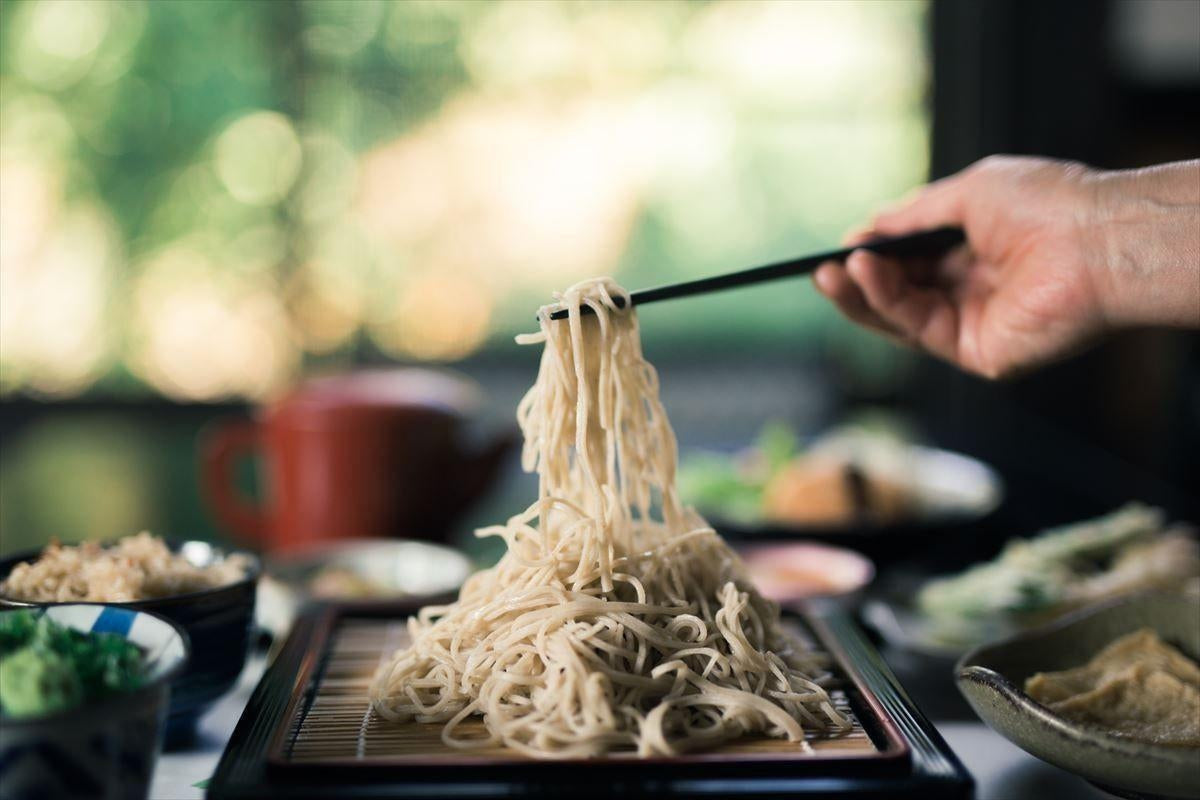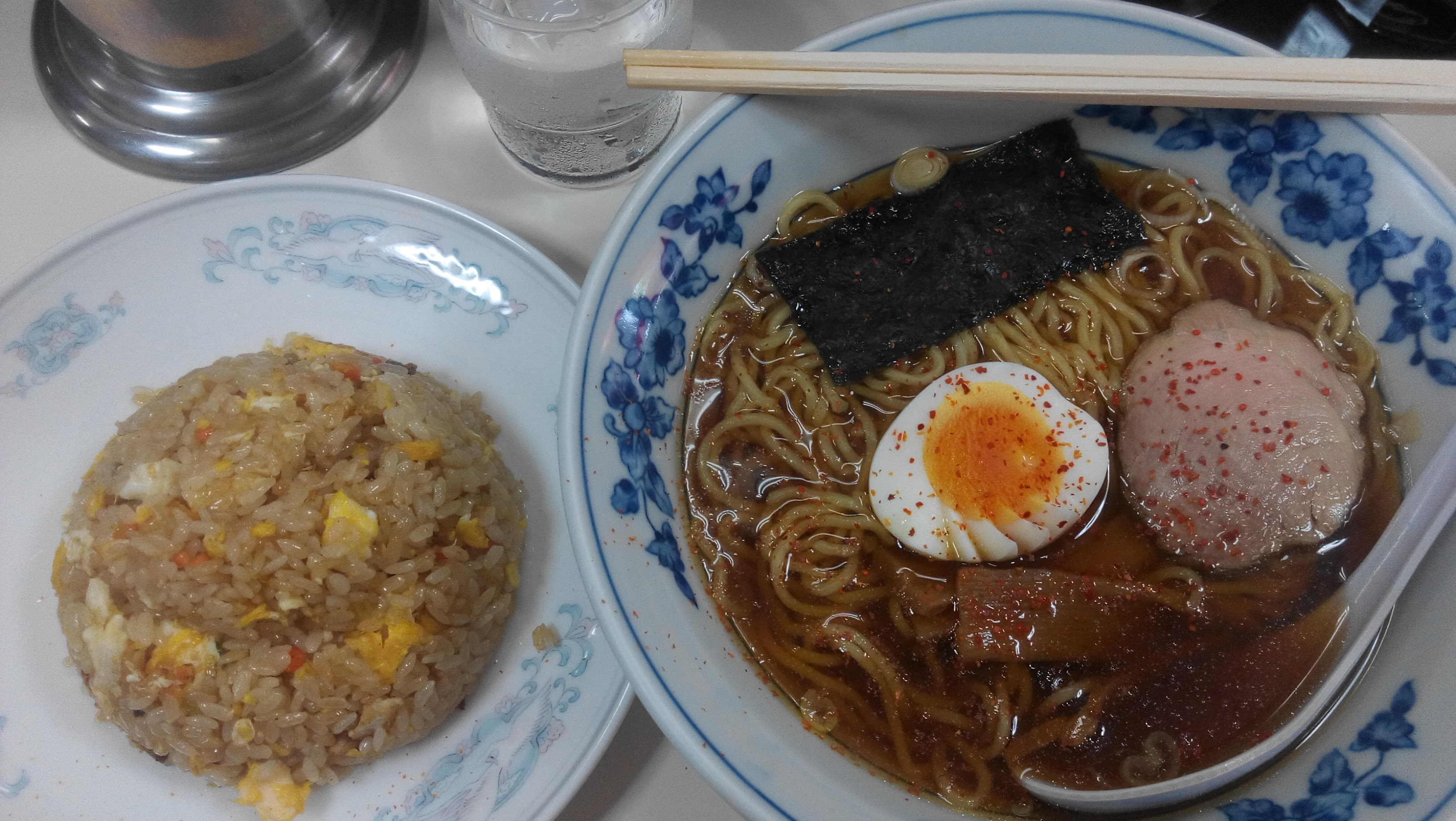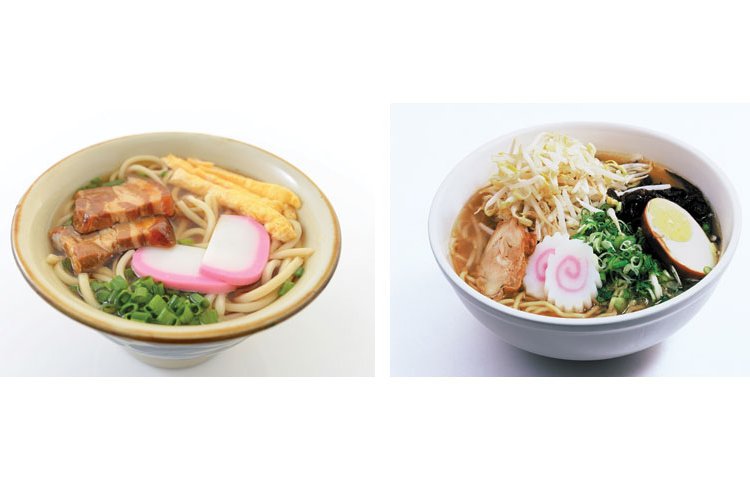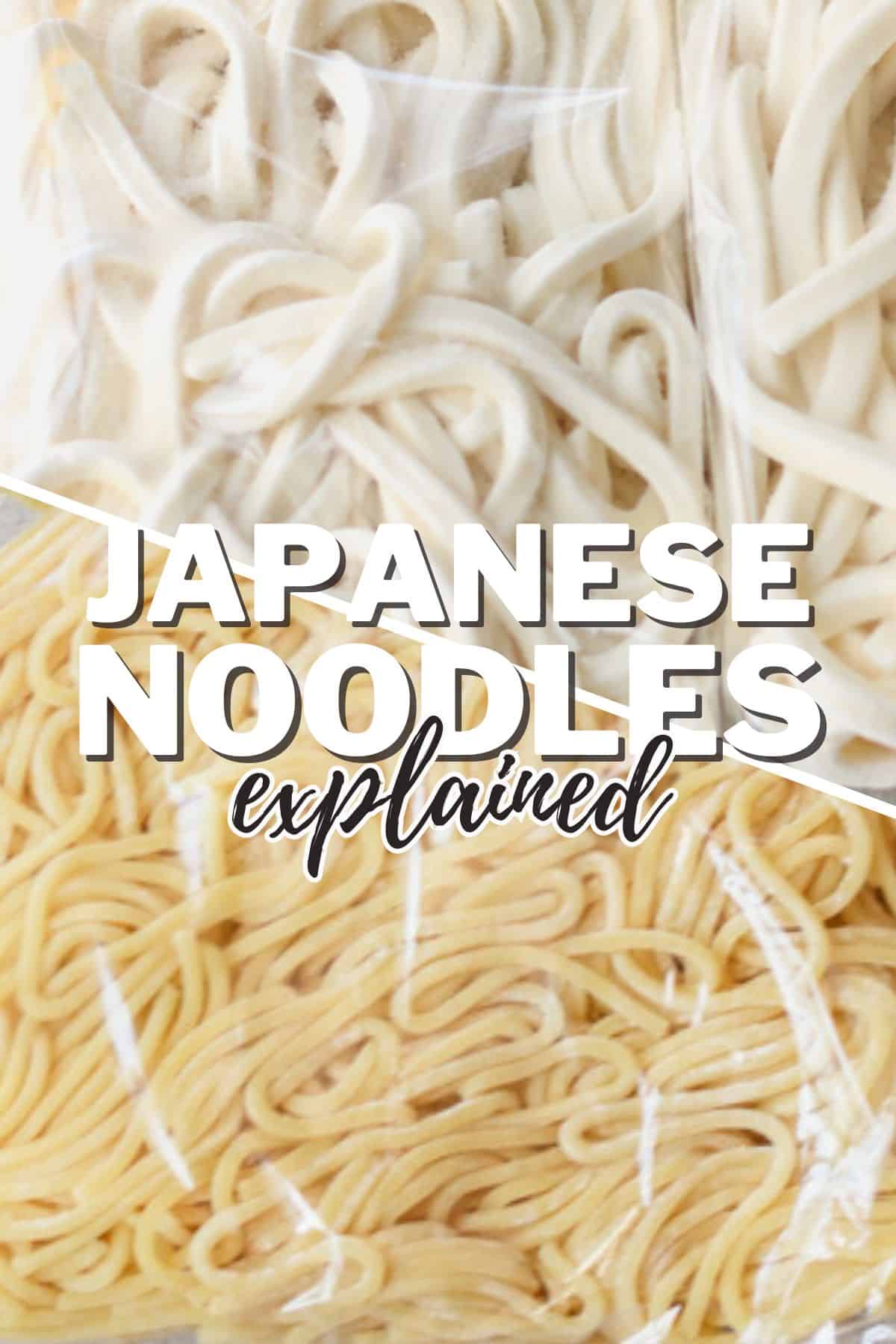Introduction

Japanese cuisine is renowned for its variety of noodle dishes, and two of the most popular ones are soba and ramen. These noodles have become synonymous with Japanese cuisine and are loved by people all over the world. In this article, we will delve into the details of soba and ramen, exploring their history, ingredients, preparation methods, and regional variations. By understanding the key differences between soba and ramen, you can make an informed choice when deciding which noodle dish to enjoy. So, let’s dive into the world of soba and ramen and unravel their unique characteristics.
Introduction To Japanese Noodle Varieties
Japan is known for its rich and diverse noodle culture, with a wide range of noodle dishes to choose from. From the thin and delicate soba noodles made from buckwheat flour to the comforting and flavorful ramen noodles made from wheat, Japanese noodles offer something for everyone. Each variety has its own unique texture, flavor, and preparation method, making it an exciting culinary experience. Whether you’re a fan of the earthy taste of soba or the rich broth of ramen, exploring the world of Japanese noodle varieties is sure to tickle your taste buds and offer a journey of culinary delight.
Understanding The Popularity Of Soba And Ramen
Soba and Ramen have gained immense popularity both within Japan and worldwide due to their unique flavors, versatile toppings, and comforting qualities. Soba, with its earthy and nutty taste, has been enjoyed in Japan for centuries and is often associated with healthiness and simplicity. On the other hand, Ramen has captured the hearts of food lovers with its rich and flavorful broth, tender noodles, and a wide variety of toppings that allow for endless customization. Both Soba and Ramen have become iconic dishes in Japanese cuisine, attracting a loyal following and inspiring countless variations and fusion dishes.
Soba Noodles

Soba noodles are a popular type of Japanese noodle that has a distinct flavor and texture. Made from buckwheat flour, soba noodles have a nutty and earthy taste that is both comforting and satisfying. These noodles have been enjoyed in Japan for centuries and are often associated with healthiness and simplicity. Soba noodles are versatile and can be served hot or cold, making them suitable for various dishes and occasions. Whether it’s a warm bowl of soba soup or a refreshing cold soba salad, these noodles offer a delightful eating experience.
Soba Noodles: History, Ingredients, And Preparation
Soba noodles have a rich history in Japanese cuisine, dating back to the Edo period. Originally made purely with buckwheat flour, the popularity of soba noodles grew as it became a nutritious and affordable staple food. Today, soba noodles are often made with a mixture of buckwheat and wheat flour to improve texture. The process of making soba noodles involves mixing the ingredients, kneading the dough, rolling it out, and cutting it into thin strands. They are commonly enjoyed in hot soups, as a side dish, or served cold with a dipping sauce.
Different Types Of Soba Noodles
There are several different types of soba noodles, each varying in their composition and preparation. Here are some notable types:
- Mori soba: This is the most basic and traditional type of soba noodle, made purely with buckwheat flour. It has a strong nutty flavor and a slightly grainy texture.
- Sarashina soba: These noodles are made predominantly with refined buckwheat flour, resulting in a lighter and more delicate texture. They are often served chilled with a dipping sauce.
- Cha soba: These soba noodles are infused with green tea powder, giving them a vibrant green color and a unique taste.
- Inaka soba: Inaka soba is made with a higher ratio of wheat flour to buckwheat flour, resulting in a denser and chewier texture.
- Nagano soba: This type of soba noodle is native to the Nagano Prefecture and is known for its thicker, heartier texture.
These variations in soba noodles allow for different flavors and textures to suit various preferences and dishes.
Ramen Noodles

Ramen noodles have become increasingly popular worldwide due to their rich and savory flavor. Originally from China, ramen noodles were adopted and transformed into a beloved Japanese dish. They are typically made with wheat flour and water, resulting in a chewy and springy texture. The noodles are then served in a flavorful broth, which can be meat-based or vegetarian. Ramen toppings vary widely and can include sliced pork, bamboo shoots, seaweed, soft-boiled eggs, and more. The broth is often seasoned with soy sauce, miso, or salt. Different regions in Japan have their own unique styles of ramen, such as the creamy tonkotsu ramen from Kyushu or the soy-based shoyu ramen from Tokyo. Ramen noodles offer a hearty and satisfying meal that is perfect for any time of the year.
Ramen Noodles: History, Ingredients, And Preparation
Ramen noodles have a rich history that can be traced back to China. In the late 19th century, ramen noodles were introduced to Japan and quickly became popular. Today, they are a staple of Japanese cuisine. Ramen noodles are typically made from wheat flour and water, giving them a chewy and springy texture. The ingredients used in ramen vary depending on the region and style, but they often include a flavorful broth, toppings such as sliced pork, seaweed, and soft-boiled eggs. Ramen noodles are cooked and then served in the broth, resulting in a satisfying and delicious meal.
Various Regional Styles Of Ramen
There are several regional styles of ramen that have developed throughout Japan, each with their own unique flavors and ingredients. Some of the most well-known regional styles include:
- Hokkaido Ramen: Originating from the northern island of Hokkaido, this style features a rich and creamy miso broth, topped with butter, corn, and seafood.
- Tokyo Ramen: This style is characterized by a clear soy-based broth and thin, straight noodles. Popular toppings include sliced chashu pork, green onions, and bamboo shoots.
- Kyushu Ramen: Hailing from the southern island of Kyushu, this style has a tonkotsu broth made from simmering pork bones for hours. It is often served with thin, straight noodles and topped with chashu, kikurage mushrooms, and pickled ginger.
- Hakata Ramen: A subset of Kyushu ramen, Hakata ramen is known for its ultra-thin and straight noodles, and a creamy tonkotsu broth that is rich and flavorful.
- Sapporo Ramen: This style is similar to miso ramen, but with a distinct Sapporo twist. It features a miso-based broth topped with butter, sweet corn, and thick, wavy noodles.
Each regional style offers a unique and delicious ramen experience, allowing you to explore the diverse flavors of Japan.
Key Differences Between Soba And Ramen

Soba and ramen, two popular Japanese noodle varieties, have distinct differences in texture, flavor, and appearance. Soba noodles, made from buckwheat flour, have a nutty flavor and a slightly chewy texture. Ramen noodles, on the other hand, are made from wheat flour and have a lighter, springy texture. In terms of appearance, soba noodles are usually thin and light brown, while ramen noodles are thicker and more yellow. Additionally, soba noodles have a lower calorie and carbohydrate content compared to ramen noodles. These differences, along with personal taste preferences, can help guide individuals in choosing between soba and ramen noodles.
Texture, Flavor, And Appearance Comparison
When it comes to texture, flavor, and appearance, soba and ramen noodles have distinct differences. Soba noodles have a slightly chewy texture, while ramen noodles are known for their springy and more elastic texture. In terms of flavor, soba noodles have a nutty and earthy taste, while ramen noodles have a lighter and more savory flavor. Additionally, soba noodles are thin and light brown in color, whereas ramen noodles are thicker and have a yellow hue. These variations in texture, flavor, and appearance contribute to the unique experience of each noodle variety.
Nutritional Value And Health Benefits
Soba noodles are often considered a healthier option compared to ramen noodles. Soba noodles are made from buckwheat flour, which is high in fiber, protein, and essential minerals such as manganese and magnesium. They are also lower in calories and fat compared to ramen noodles. Additionally, soba noodles have a lower glycemic index, which means they have a slower impact on blood sugar levels. This can be beneficial for individuals looking to manage their blood sugar levels or maintain a balanced diet. However, it is important to note that the nutritional value and health benefits of noodles may vary depending on other ingredients and cooking methods used.
How To Choose: Soba Or Ramen?

When choosing between Soba and Ramen, there are a few factors to consider. Firstly, consider your personal preference in terms of flavor and texture. If you prefer a nuttier, earthy flavor with a chewier texture, then Soba noodles might be the better choice for you. On the other hand, if you enjoy a richer and more savory flavor with a softer texture, then Ramen noodles might be your go-to option. Additionally, consider the specific dish you are craving and the accompanying ingredients. Some dishes are traditionally made with Soba noodles, while others are best enjoyed with Ramen noodles. Ultimately, the decision of whether to choose Soba or Ramen comes down to your personal taste and the specific dish you are in the mood for.
Factors To Consider When Choosing Between Soba And Ramen
When deciding between Soba and Ramen, there are several factors to consider. Firstly, take into account your personal taste preferences. If you enjoy a nutty, earthy flavor with a chewier texture, then Soba noodles might be the better option for you. On the other hand, if you prefer a richer, more savory taste with a softer texture, then Ramen noodles could be the way to go. Additionally, consider the dish you are craving and the accompanying ingredients. Some dishes are traditionally made with Soba noodles, while others are best enjoyed with Ramen noodles. Ultimately, the decision boils down to your individual preferences and the specific dish you are in the mood for.
Situations Where Soba Or Ramen Is More Suitable
Soba and Ramen have their own unique characteristics that make them more suitable for certain situations. Here are some scenarios where one noodle variety may be preferred over the other:
- Soba is often enjoyed cold in the summer months, making it a refreshing choice for hot weather. Its nutty flavor and firm texture make it an ideal base for salads or dipping sauces, such as tsuyu.
- Ramen, on the other hand, is best enjoyed hot and is perfect for warming up during the colder months. Its rich broth and tender noodles make it a comforting and filling meal.
- If you’re looking for a lighter option, Soba is the way to go. It is lower in calories and gluten-free, making it a healthier choice for those with dietary restrictions.
- Ramen is known for its bold flavors and variety of toppings, making it a popular choice for those craving a more indulgent and flavorful meal.
Ultimately, the choice between Soba and Ramen depends on the occasion, personal preferences, and the desired dining experience.
Conclusion

In conclusion, both Soba and Ramen are beloved Japanese noodle varieties that offer unique flavors and dining experiences. Soba, with its nutty flavor and firm texture, is a great choice for lighter meals, especially during the summer months. On the other hand, Ramen is perfect for those seeking a comforting and indulgent meal with its rich broth and tender noodles. Ultimately, the choice between Soba and Ramen depends on personal preferences and the occasion. So, next time you’re craving noodles, consider the characteristics of each variety and choose the one that suits your taste and mood.
Summary Of The Differences Between Soba And Ramen
Soba and Ramen are two distinct Japanese noodle varieties with notable differences. Soba is made from buckwheat flour, offering a nutty flavor and firmer texture. Ramen, on the other hand, is made from wheat flour and has a more familiar taste and chewy texture. Soba noodles are typically served cold or in a light broth, while Ramen is known for its rich and flavorful soup. Additionally, Soba is considered a healthier option due to its higher fiber and protein content. When choosing between the two, consider your taste preferences, dietary restrictions, and the desired dining experience.
Personal Preferences And Recommendations
When it comes to choosing between Soba and Ramen, personal preferences play a significant role. Some people may prefer the earthy and nutty flavor of Soba noodles, while others may crave the rich and savory broth of Ramen. It’s important to consider your taste preferences, dietary restrictions, and the dining experience you desire. If you’re looking for a lighter and healthier option, Soba may be the way to go. However, if you want a more indulgent and flavorful meal, Ramen is the perfect choice. Ultimately, the decision comes down to personal taste and what satisfies your noodle cravings the most.
Frequently Asked Questions – Soba vs Ramen
Q: What is the difference between soba and ramen?
A: Soba and ramen are both popular Japanese noodles, but they have distinct differences. Soba noodles are made from buckwheat flour and have a nutty flavor, while ramen noodles are wheat-based and have a chewy texture.
Q: Are soba noodles and ramen noodles cooked differently?
A: Yes, the cooking methods for soba and ramen noodles differ. Soba is traditionally served either cold with a dipping sauce or in a hot broth. Ramen noodles are typically boiled separately and then added to a flavorful soup broth.
Q: How do soba and ramen differ in terms of taste?
A: Soba noodles have a distinct earthy and nutty taste due to the buckwheat flour. Ramen noodles, on the other hand, are neutral in flavor and are meant to complement the broth and toppings they are served with.
Q: Can you customize soba and ramen with different toppings?
A: Absolutely! Both soba and ramen can be customized with various toppings to suit your taste preferences. Popular toppings for soba include sliced green onions, tempura, seaweed, and grated daikon radish. Ramen can be topped with ingredients like chashu (braised pork), soft-boiled eggs, nori seaweed, and bamboo shoots, to name a few.
Q: Which is healthier – soba or ramen?
A: Soba noodles are typically considered the healthier option as they are made from buckwheat flour, which is rich in fiber and nutrients. Ramen noodles, although tasty, are higher in calories and often contain more sodium due to the flavorful soup broths they are served in.
Q: Are soba and ramen suitable for vegetarians or vegans?
A: Soba noodles can be suitable for vegetarians and vegans, depending on the sauce or broth used. However, it’s essential to check the ingredients used, as some dipping sauces and broths may contain animal products. Ramen often contains meat-based broths, but vegetarian or vegan options are becoming more widely available.
Q: Can I find soba and ramen in restaurants outside of Japan?
A: Yes, soba and ramen have gained popularity worldwide, and many Japanese restaurants outside of Japan offer these dishes. You can also find variations of soba and ramen in fusion restaurants and noodle bars that cater to different tastes and preferences.
Q: Can soba and ramen be made at home?
A: Absolutely! Both soba and ramen can be made at home with the right ingredients and recipes. However, soba noodle-making can be more complex due to the specialized buckwheat flour and technique required. Ramen can also be time-consuming to make from scratch, but there are simplified recipes available for homemade versions of both noodles.
Q: Which one should I choose – soba or ramen?
A: The choice between soba and ramen really comes down to personal preference. If you enjoy a noodle dish with a distinct nutty flavor and a lighter overall feel, soba might be the best choice for you. On the other hand, if you prefer a dish with chewy noodles and a rich, flavorful broth, ramen is worth a try. Ultimately, it’s all about exploring and enjoying the diverse world of Japanese cuisine!

We are a small takeaway restaurant offering a great selection of food cooked by our Thai chef. Table spaces are limited, so please book in advance.